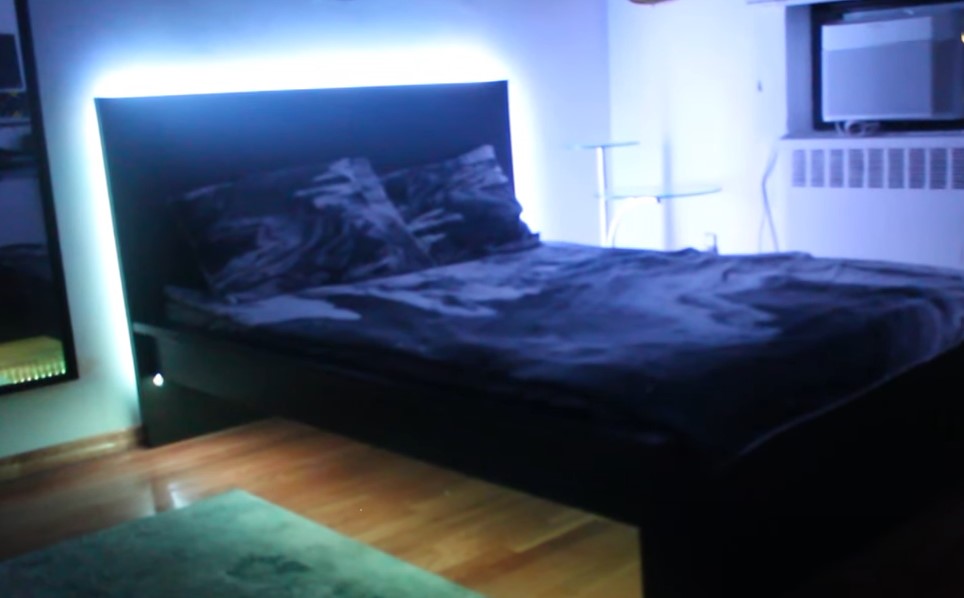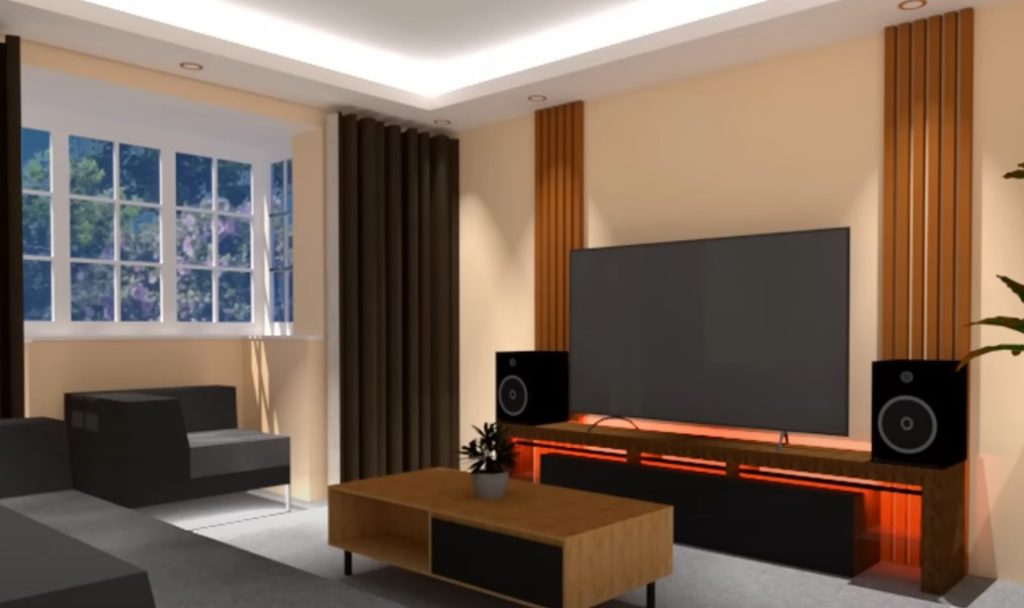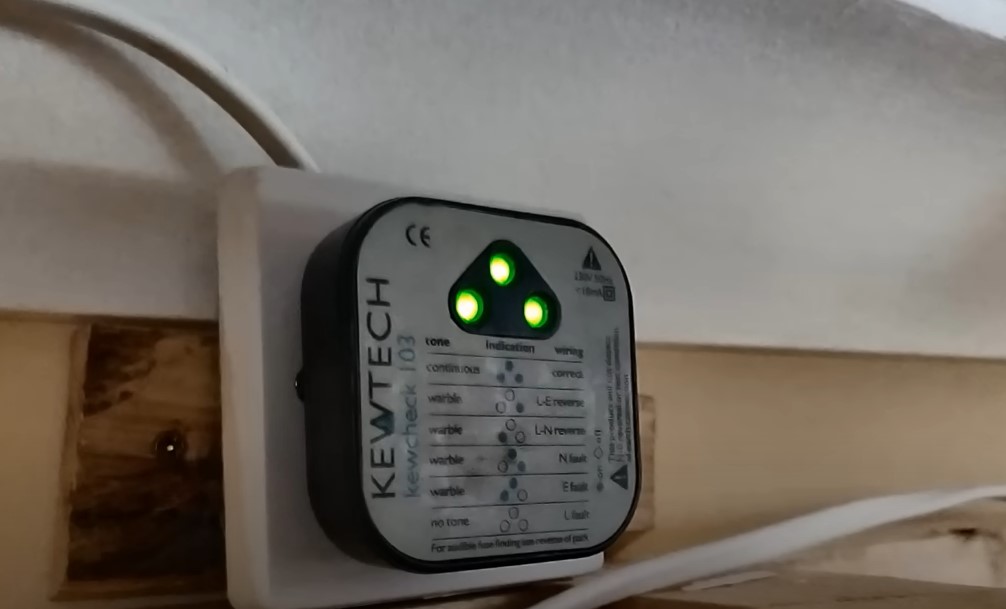How To Design a Room with LED Lights?: A Comprehensive Guide To Designing With LED Lights
Want to create a mood, highlight architectural features, or simply improve the ambiance of your home? LED lighting offers incredible versatility and energy efficiency. How to design a room with LED lights? This comprehensive guide will take you through everything from choosing the right bulbs to planning sophisticated lighting schemes, covering both the technical aspects…
Want to create a mood, highlight architectural features, or simply improve the ambiance of your home? LED lighting offers incredible versatility and energy efficiency. How to design a room with LED lights? This comprehensive guide will take you through everything from choosing the right bulbs to planning sophisticated lighting schemes, covering both the technical aspects and the creative design process. You’ll learn about different types of LED lights, color temperatures, smart home integration, and more, equipping you to transform any space.
Light-emitting diodes (LEDs) are semiconductor devices that convert electricity directly into light. Unlike incandescent bulbs that produce light through heat, LEDs are far more energy-efficient, producing less heat and lasting significantly longer. This efficiency translates to lower energy bills and reduced environmental impact.
How to Design a Room with LED Lights?

The market offers a wide array of LED bulbs, each with unique characteristics. Common types include:
- A-shape bulbs: Standard replacements for incandescent bulbs, fitting most existing fixtures.
- MR16 bulbs: Smaller, often used in recessed lighting or track lighting.
- PAR bulbs: More powerful and typically used for accent lighting.
- Gu10 bulbs: Similar to MR16 but with a different base.
- LED strips: Flexible strips of LEDs, perfect for under-cabinet lighting or creating accent features.
Key Features to Consider
When selecting LED bulbs, pay attention to:
- Lumens: A measure of light output (brightness).
- Color temperature: Measured in Kelvin (K), it indicates the “warmth” or “coolness” of the light. Lower Kelvin values (2700K-3000K) produce warmer, yellowish light, while higher values (5000K-6500K) produce cooler, bluish light.
- CRI (Color Rendering Index): A measure of how accurately the light renders colors. A higher CRI (above 80) is desirable for accurate color representation.
- Dimmability: Not all LED bulbs are dimmable; check specifications before purchase.
Table of Key information which you should not miss. Based on the table, you can take your decision.
Here’s a structured table for How to Design a Room with LED Lights: A Comprehensive Guide:
| Aspect | Key Considerations | LED Lighting Ideas |
|---|---|---|
| Room Purpose | Define the room’s function (e.g., relaxing, working, entertaining) | Use warm LED lights for relaxation, cool white for focus |
| Lighting Layers | Combine ambient, task, and accent lighting for depth | Ceiling LEDs for ambiance, desk lamps for tasks, strip lights for accents |
| Fixture Types | Choose from recessed, pendant, track, and strip lighting | Use recessed LEDs for a modern look, pendant lights for style |
| Color Temperature | Select warm (2700K-3000K) for cozy, cool (4000K-6000K) for productivity | Living rooms: warm white, kitchens: neutral or cool white |
| Dimmability | Opt for dimmable LEDs to adjust brightness | Install dimmer switches or smart LED bulbs for control |
| Accent Lighting | Highlight architectural features or décor | Use LED strip lights under shelves, cabinets, or behind TVs |
| Smart Lighting | Integrate with smart home systems for automation | Control lights with apps, voice assistants, or motion sensors |
| Energy Efficiency | Choose LEDs with high lumens per watt for efficiency | Look for ENERGY STAR-rated LED bulbs |
| Color Options | Experiment with RGB or tunable white LEDs for mood setting | Use RGB strips for entertainment rooms, tunable white for daily use |
| Placement Tips | Avoid glare and shadows by positioning LEDs strategically | Indirect lighting behind furniture or along ceilings for a soft glow |
Would you like additional details on any section?
Planning Your LED Lighting Design

Assessing Your Room and Needs
Before you begin, consider the room’s purpose, size, and existing features. A bedroom requires a different lighting approach than a kitchen or living room. Think about the mood you want to create: relaxing, energetic, or focused?
Layering Your Lighting
Effective room lighting involves layering different types of light sources to create depth and flexibility. This typically includes:
- Ambient lighting: General illumination, often from ceiling fixtures or recessed lights.
- Task lighting: Focused light for specific activities, such as reading or cooking.
- Accent lighting: Highlight architectural features, artwork, or plants.
Choosing the Right Color Temperature
Color temperature significantly impacts the mood of a room. Warmer colors (2700K-3000K) are ideal for bedrooms and living rooms, creating a cozy atmosphere. Cooler colors (5000K-6500K) are better suited for kitchens and bathrooms, promoting alertness and cleanliness.
Types of LED Lighting Fixtures

Recessed Lighting
Recessed lights are installed in the ceiling, providing even ambient lighting. They are energy-efficient and offer a clean, modern aesthetic.
Pendant Lights
Pendant lights hang from the ceiling, offering a focal point and ambient lighting. They come in various styles and sizes, allowing for customization.
Track Lighting
Track lighting systems allow you to position multiple light heads along a track, offering flexibility in directing light towards specific areas.
Wall Sconces
Wall sconces provide ambient or accent lighting and can add a touch of elegance to a room.
Strip Lighting
LED strip lights are versatile and can be used under cabinets, behind furniture, or to create cove lighting.
Related Article: Dining Room LED lights ideas
Integrating Smart LED Lighting

Smart Bulbs and Their Benefits
Smart LED bulbs connect to your home Wi-Fi network, allowing you to control them remotely via a smartphone app. This offers features like scheduling, dimming, and color changing.
Popular Smart Home Systems
Many smart home systems integrate with LED lighting, such as Philips Hue, LIFX, and Samsung SmartThings. These systems often allow for voice control through assistants like Alexa or Google Assistant.
Setting Up a Smart Lighting System
Setting up a smart lighting system is relatively straightforward. Most systems involve downloading an app, connecting the bulbs to your Wi-Fi network, and then controlling them through the app.
LED Lighting Installation and Safety
Basic Wiring and Installation Tips
While many LED fixtures are simple to install, always follow manufacturer instructions and consider consulting a qualified electrician for complex installations or if you are unsure about any aspect of the electrical work.
Safety Precautions
Always turn off the power at the breaker before working with any electrical wiring. Never touch exposed wires. Ensure proper ventilation around LED fixtures to prevent overheating.
Cost Considerations and Energy Efficiency
Comparing Costs of LED vs. Other Lighting
While the initial cost of LED bulbs might be higher than incandescent or CFL bulbs, their longer lifespan and energy efficiency lead to significant cost savings in the long run.
Calculating Energy Savings
The energy savings from using LED lighting can be substantial. You can calculate your potential savings using online energy calculators available on various energy company websites.
Creative Lighting Design Ideas
Highlighting Architectural Features
Use LED strip lights to highlight crown molding, built-in shelving, or other architectural details. This adds depth and visual interest to a room.
Setting the Mood with Color
Experiment with different color temperatures and colored LED bulbs to create different moods in different areas of your home. Warm white for relaxation, cool white for focus, and colored lights for parties or special events.
Creating Accent Lighting
Use spotlights to highlight artwork, plants, or other decorative elements. This creates focal points and adds visual interest to the space.
Troubleshooting Common LED Lighting Issues
Flickering or Dimming Lights
Flickering or dimming lights can be caused by several factors, including faulty bulbs, wiring issues, or dimmer switch compatibility. Check the bulb, wiring, and dimmer switch to troubleshoot.
Overheating Issues
Ensure adequate ventilation around LED fixtures to prevent overheating. Overheating can shorten the lifespan of the bulbs.
Choosing the Right LED Lighting for Different Rooms
Bedroom Lighting Ideas
Bedrooms typically benefit from layered lighting, including ambient lighting (ceiling fixtures), task lighting (bedside lamps), and accent lighting (wall sconces).
Living Room Lighting Ideas
Living rooms benefit from a variety of lighting options, combining ambient, task, and accent lighting to create a welcoming and functional space.
Kitchen Lighting Ideas
Kitchens require bright, functional lighting. Combine overhead lighting with under-cabinet lighting and task lighting above the countertop or island.
Beyond the Basics: Advanced Techniques in LED Lighting Design
Light Diffusion and Soft Lighting Effects
Using diffusers or frosted glass can soften harsh light and create a more comfortable ambiance.
Color Mixing and Dynamic Lighting
Smart LED systems allow for color mixing and dynamic lighting effects, creating exciting visual experiences.
Frequently Asked Questions
What are the benefits of using LED lights?
LED lights offer numerous benefits, including energy efficiency, longer lifespan, durability, and design versatility. They produce less heat, are environmentally friendly, and can offer color-changing capabilities with smart technology.
How do I choose the right color temperature for my room?
Consider the room’s function and desired mood. Warmer temperatures (2700K-3000K) are ideal for relaxation, while cooler temperatures (5000K-6500K) are better for task-oriented spaces.
Can I dim LED lights?
Not all LED bulbs are dimmable. Check the packaging to ensure compatibility with your dimmer switch. Some smart bulbs offer dimming functionality via an app.
How long do LED lights last?
LED lights typically last significantly longer than incandescent or CFL bulbs, often lasting for 25,000 hours or more.
How much do LED lights cost?
The initial cost of LED bulbs might be higher, but their long lifespan and energy efficiency lead to cost savings over time.
Are LED lights safe?
LED lights are generally safe, but always follow manufacturer instructions and take proper safety precautions when installing or handling them.
Final Thoughts
Designing a room with LED lights is a rewarding process that allows you to transform your space and create the perfect ambiance. By understanding the basics of LED technology, carefully planning your lighting scheme, and selecting the right fixtures, you can create a beautiful, functional, and energy-efficient environment. Remember to consider the layering of light, the color temperature, and the unique features offered by smart LED systems. With a little planning and creativity, you can easily illuminate your home with the versatility and efficiency of LED lighting. Explore the options available and start creating the lighting scheme of your dreams!

